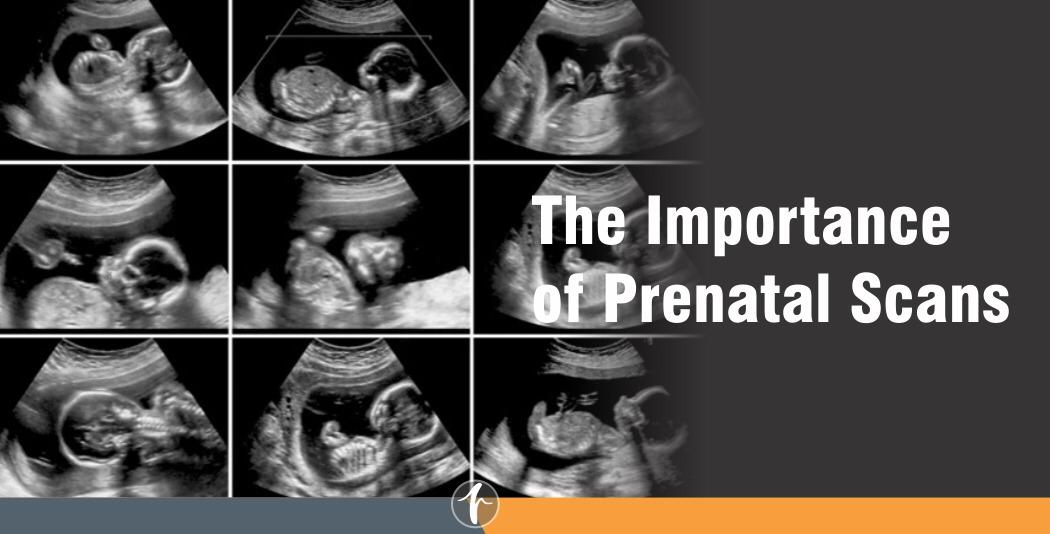The Importance of Prenatal Scans
September 14, 2020

Prenatal scans are an important part of your obstetrics check-ups. They help your doctor determine the health of the foetus and to check if everything is normal with your pregnancy. A number of scans are available, some of them are routinely done for all pregnancies and a few special ones that are advised for high risk pregnancies. If you have a normal healthy pregnancy, you will have a scan at the 12th and the 20th weeks in addition to the first scan. If you are at a higher risk of preterm delivery, then you will require additional scans.
The first scan is truly a beautiful moment that brings the baby in your womb before your eyes. It also serves other vital purposes. Let’s see what your prenatal scans are for.
First scan- Between 6 and 8 weeks
- It confirms that your pregnancy is in the uterus and not in the fallopian tubes
- It checks for the presence of the yolk sac and foetal pole to establish the age of your pregnancy
- It checks if it is a single or multiple pregnancy
- It establishes the Estimated Due Date
NT Scan– Between 11 weeks and 13 weeks and 4 days
- This is a risk assessment scan which checks for the likelihood of chromosomal abnormality. The risk is greater if you are 35 years or older and a Nuchal Translucency (NT) scan is taken.
- If you are at risk of pre-term labour you will be advised a Cervical length scan
- Uterine blood flow will also be measured to check if you are at risk of developing pre-eclampsia which could lead to placental insufficiency and poor foetal development.
Second trimester scan-Anomaly Scan– Between 18 weeks and 22 weeks
- To check the physical development
- To check the skeletal system, brain and heart systems
- To check for placenta praevia where the placenta occurs over or near the cervix
- To check for the amount of amniotic fluid
- Best Before 20 weeks
- 7% of anomalies can be detected
Third trimester scan- 24-28 weeks & 32 -36 weeks- Growth Scan
- To check foetal development- head and abdominal circumference and femur length are measured
- To estimate the date of delivery and the weight of the baby
- To monitor heart beat
- To check the position of the baby
- To asses total fluid volume
- To check position and function of placenta
- Follow Up Scan
Scan after the due date
If you do not go into labour after the due date, then a scan is done to assess the fluid volume and flow through the cord to determine the risk of foetal distress when contractions are induced.
If you are pregnant and have any doubts about your scans or schedules, contact us for a thorough understanding of your pregnancy and for a safe and full-term birth.







